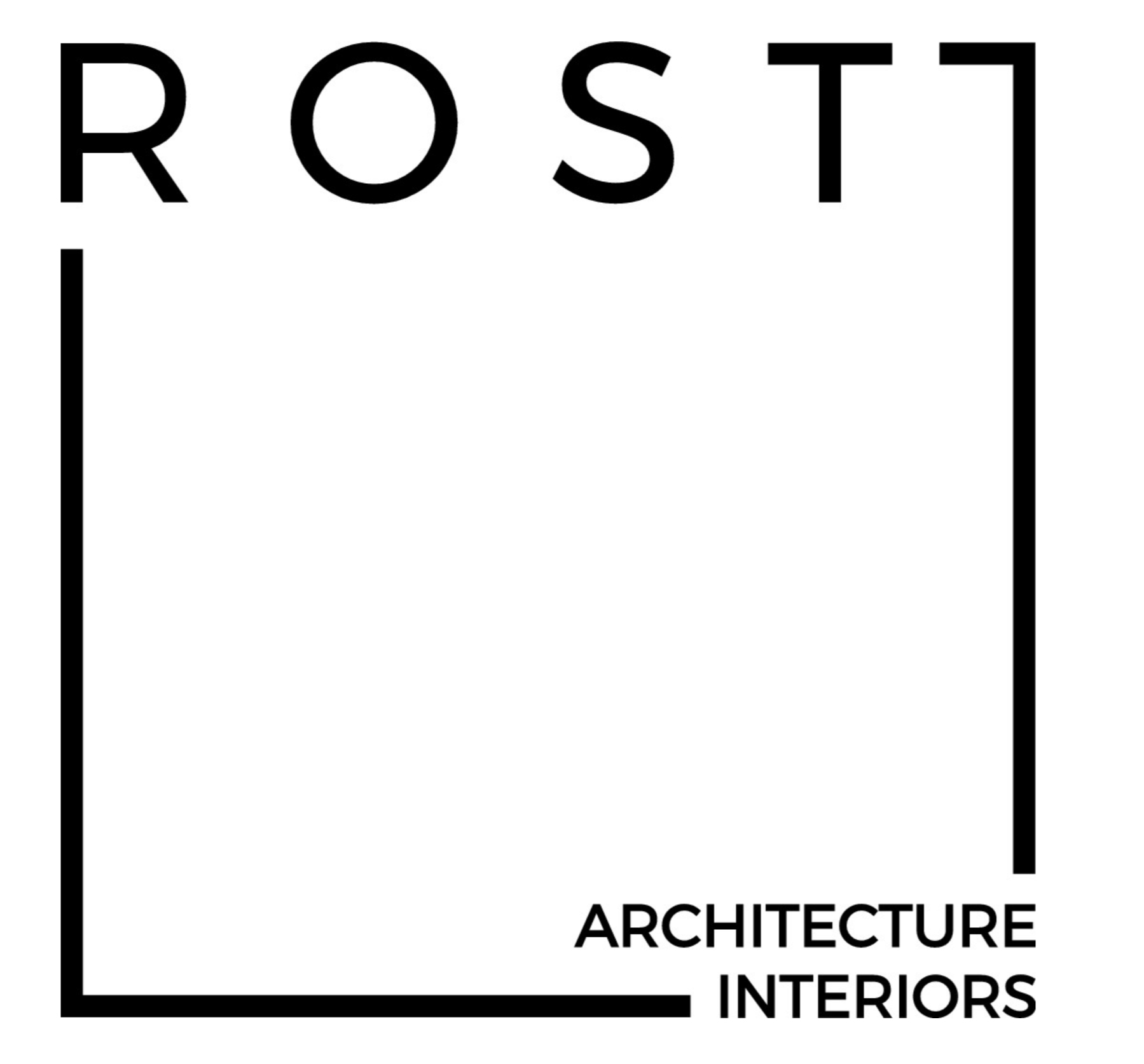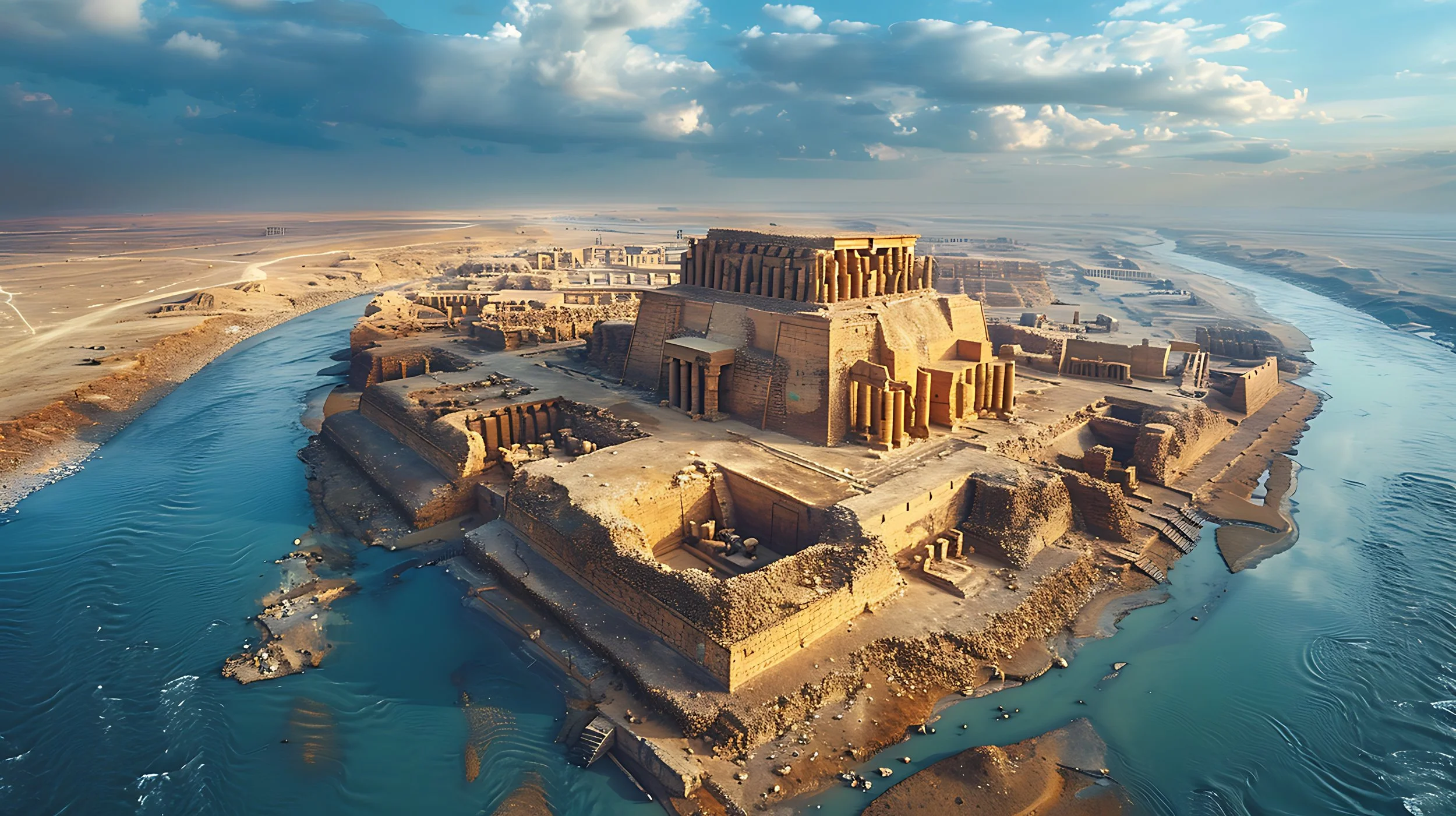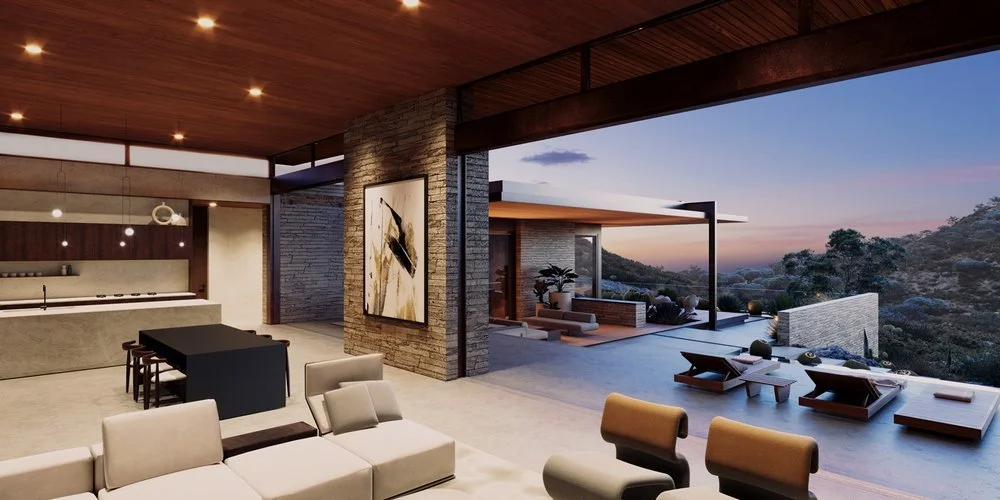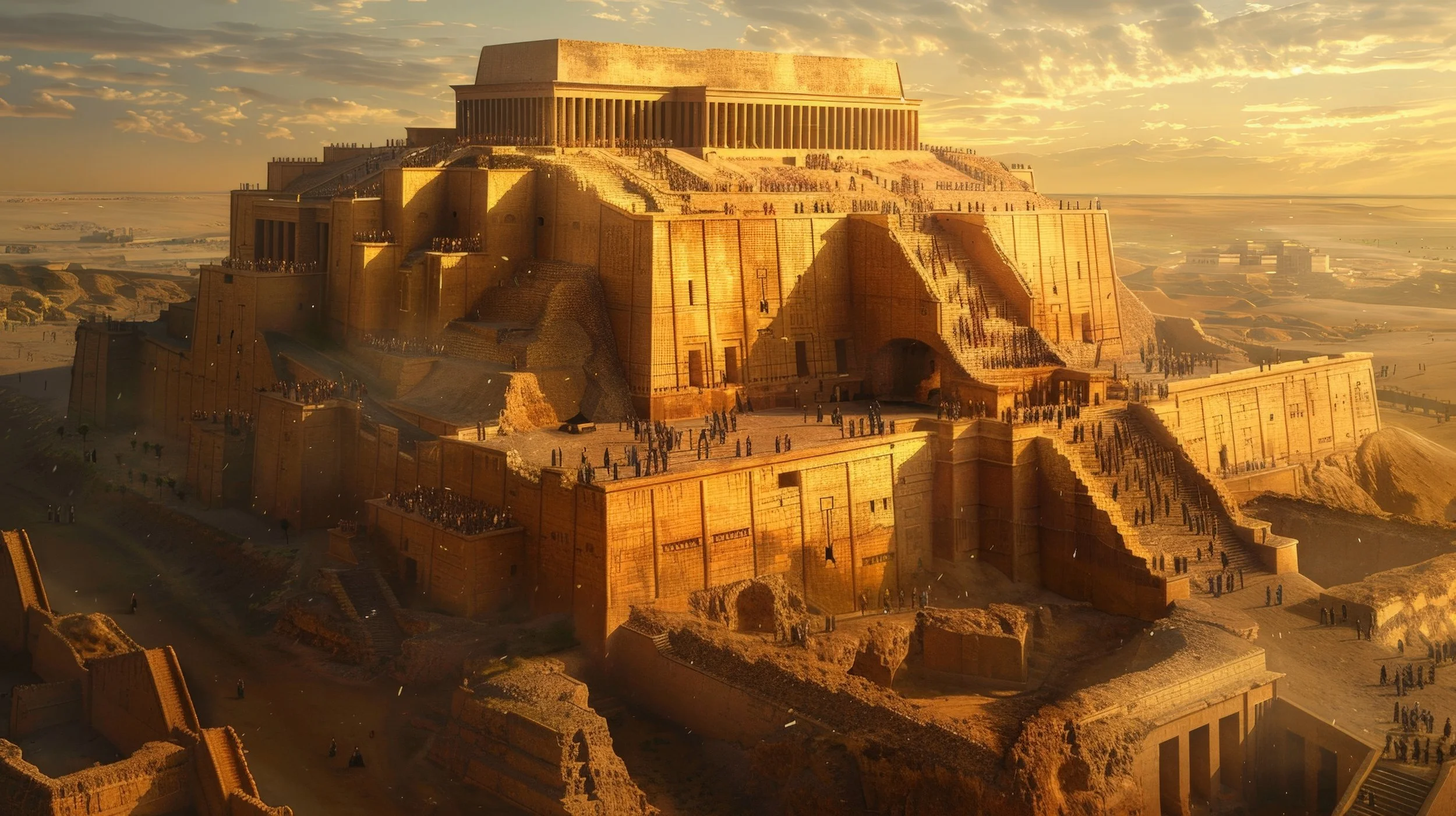Values of the City
View of Paris from the Paris Opera Hall. Photograph was selected to illustrate that Paris exhibits many of the qualities discussed in this article. The intrusion of the automobile in public life is evident from the image. Photograph Copyright by Mitchell Rocheleau
Understanding a culture’s collective psychology/values and deciphering how those ideas manifest in their built environment can help inform how we build cities for the future. Despite the importance of such studies, it is rare to stumble upon someone who writes about the intersection of psychology and the built environment, especially one who expresses ideas clearly and accessibly.
I have known of the author Alain de Botton since reading his book The Architecture of Happiness in 2008. The book investigated this subject and piqued my interest as it illustrated the deep connection between human psychology and our built environment.
Lately, I have ventured back into Botton’s work. Since the original publication of Architecture of Happiness, he seems to have refined his ideas. Over this time, he has also published books that touch on many other disciplines, including Philosophy, Political Theory, Sociology, Psychotherapy, and Literature. All of this seems to have given him a broader perspective and a heightened ability to contextualize and clarify his ideas.
In a recent video he published titled “How to Make an Attractive City,” he poignantly and succinctly describes how the foundations of a good city are based on human psychology. Below, I will summarize and elaborate a few of his points, adding insight from various other sources. The ideas below are essential to disseminate within our culture to make us more aware of the psychological foundations that drive the character and quality of our cities.
Balance Between Order and Chaos
One of the most essential characteristics of a desirable city is a balance between visual order and variety. If the buildings' forms, characteristics, scales, and details don’t appear to have order, it may create chaos and anxiety. Symmetry, repetition, and aesthetic cohesion help to create predictability and understanding, which often helps to lower anxiety.
This balance of organized complexity is tricky to achieve and is rarely ubiquitous throughout a city. When areas of cities begin to approach this balance, people are intuitively attracted and often choose to stay. They feel comfortable and balanced in this environment, sometimes entirely unaware of the reason why. They simply know that they enjoy being there.
When extreme or relentless order is expressed in the city, such as in many of the modernist buildings of the early to mid-1900s, it can result in a stark, ruthless, and rigid environment. It may feel mechanistic, void of character or interest, and inhumane. Again, humans will intuitively sense these characteristics in these areas. Occupancy rates and foot traffic will slowly decline, and the developers will wonder why.
The balance between order and chaos is also optimal for individual human development. We understand the environment enough (order) to prevent the flight or fight response from activating; however, we are just outside of our comfort level (chaos). In this context, it makes sense that an environment gracefully balancing between order and chaos would be intuitively attractive to humans. This is described as the zone of optimal development in educational psychology.
In this sense, an urban environment that exhibits harmony of order and chaos becomes a Petrie dish for human development. Perhaps this is why most of us enjoy traveling to cities that offer this balance. We feel we are growing, productive, stimulated, and expanding our horizons as we teeter and balance between chaos and order.
View of people congregating around the Paris Opera Hall. Photograph was selected to illustrate the visible life and activity in front of the Opera Hall, one of Paris’ most significant cultural buildings. Photograph Copyright by Mitchell Rocheleau
Visible Life and Activity in the City
We need to see streets and buildings that are alive, occupied with thriving people and nature. The city's life on display inspires us and gives us hope by modeling healthy activity and relationships in action. We see people conversing, having lunch, and laughing. We also see people angry, anxious, or upset. All of which gives us a broad perspective on healthy human activity. We can become observers and familiarize ourselves with these states by seeing others experiencing them, making us feel less isolated when they come upon us. An active, lively city teaches us about human nature and psychology through observation.
Most of a city's life is witnessed at the street level, so the design of those spaces should be given extra attention and the proper economic resources invested in making this area highly attractive, usable, and engaging for humans.
Many buildings overlook this principle, consciously or unconsciously. The most common offense is to be brutally opaque from the exterior at street level. These buildings opt for privacy over transparency. Solid, unarticulated, and impenetrable surfaces line the street with little to no vegetation, putting the pedestrian in a thin shoot of sidewalk between buildings and rushing cars.
When people cannot see into a building, it is rendered lifeless, anonymous, and without a soul. We ask ourselves if there are even occupants in the building and question whether it is still in use. Lifeless buildings make us uneasy and want to leave.
From a symbolic point of view, the anonymity of opaque buildings is isolating and contradicts one of our fundamental human needs for human connection. Although we all need retreat and privacy, transparency, and visibility in buildings, especially in cultural or public areas of cities, we should opt for transparency instead of privacy and anonymity at the street level. We hide life away in many of our buildings and cities when we can showcase the design, activities, and people inside them. We could observe people moving about doing meaningful and enriching activities and work. All of these are stimulating and encouraging, adding to the life and vibrancy of a city. Given the recent scientific studies on the detrimental health effects of isolation and loneliness, buildings that facilitate community, activity, and human connection should be carefully considered.
Photograph showing the skyline of Florence, Italy. The big buildings in Florence are for humanistic, cultural and spiritual purposes, not hedge funds, pharmaceutical companies, and fast-food empires. Photograph Copyright by Mitchell Rocheleau
The Values Expressed Through Our Big Buildings
If you look at the skyline of any major city, the most prominent buildings will reveal the city's authentic values. It can be incredibly revealing when most buildings in a city's skyline house hedge funds, pharmaceutical companies, and fast-food empires. Often, these businesses have a value system geared overwhelmingly towards a single metric: financial profitability.
Profitable businesses and a productive economy are foundational to our modern cities. All buildings need to make sense financially on some level. However, we need to give more consideration to the potential cultural, social, and humanistic upside that the building can produce rather than exclusively the financial upside. When the financial return of a building project is the single determining metric of success, the soul and culture of a town are in jeopardy and will often begin to deteriorate.
Although it may be unconscious, we may feel a sense of hollowness, isolation, and disconnection from these buildings. They do not reflect our most fundamental and necessary values and gloss over the quality of the human experience that their presence will generate. Looking up at the skyline, we become confused and begin questioning why we somehow cannot relate. We sense a disconnect between the values that the building expresses and our human nature. These buildings are massive; many must have invested vast amounts of time and financial resources into their creation. They must believe in the values of these companies. The feeling of isolation and disconnection sets in.
The buildings are often not location-specific, built from standard designs and materials, and express an anonymous aesthetic that could be found anywhere in the world. This further isolates people from them, making them increasingly unrelatable.
Our significant buildings should represent more humanistic, cultural, or spiritual pursuits. If designed well, these types of buildings can exude a sense of warmth, understanding, and kinship between humans and the city. They can show that the building and city understand our deepest human needs and that the people and their well-being are significant in the city's life and decision-making.
Paradoxically, many buildings aimed to obtain immediate financial gains, greater rentable area, etc., suffer dramatically over the long-term lifecycle of the building. We could consider investing more of the budget of a building on quality and design rather than additional square feet. A city filled with smaller structures that were thoughtfully designed, offer spaces for social interactions, and are built of high-quality materials will create a much more appealing city than one of minimum quality but maximum rentable square footage.
Many believe governmental intervention is necessary to control this, especially for large-scale public projects. Although tricky, this could be possible. However, a more lasting approach is a fundamental value shift in our populations. When the psychology of the people in cities shifts to elevate humanity and culture on our value systems over profit for profit's sake, it will be reflected in the structures we build. We must expose more people to the long-term effects of building cities with different value sets. From studying history, we know the results of building cities and buildings without a humanistic approach. It isn’t pretty aesthetically or financially.
Photograph of Copenhagen Denmark showing the compact nature of the city. Human scale and a balance between order and variety are also present in this image. Photograph copyright by Mitchell Rocheleau
Compact Cities
Before the Industrial Revolution, families with financial resources began retreating from the cities to country estates. An increasing number of people sought to escape the city's smog, congestion, and unsanitary conditions. This mindset and pattern were the stimulus for modern suburban sprawl.
People sought isolation, privacy, and natural solace in their countryside homes. However, we did not comprehend the long-term evolution of this phenomenon and that it would spread so widely amongst the population. Everyone began to want their retreat, and financiers, lenders, and developers were eager to supply the demand.
These suburbs needed to be connected by streets and highways, and infrastructure was built to cut through the natural landscape. They are barren, unattractive, and create a disconnect between us and the environment. The speed at which we travel on them exceeds the capacity for our eyes and bodies to process the environment, which can be unnerving and disorienting.
Suburban developments are expensive to build. They require extensive trenching for utilities, long roads, and sidewalks, and more resources are needed to construct them than more compact developments. Suburban developments also generate considerably more waste during construction and maintenance.
Still today, we tend to think we want isolation and privacy. Although this may be true, suburban homes and their accompanying infrastructure collectively create environments that skew too far toward isolation and anonymity. We need to look for other solutions.
The feeling of anonymity and lack of people out in public in many of these suburban areas also have a lot to do with governmental zoning restrictions. Many zoning codes do not allow other uses to be intermingled with residential uses. This destroys the probability that people will walk to the market, coffee shop, or library in public. They are forced to get into their cars and drive to these locations. Anonymity and isolation continue once they open the door to their vehicle.
The automobile's presence and accompanying required infrastructure can be reduced in denser environments with various uses. Reducing this is a huge step toward improving our cities' overall quality, walkability, and comfort.
Once the automobile presence is minimized, dense urban environments feel more comfortable. Integrating green spaces, public parks and squares, walking paths, and bike lanes will create a sense of community, activity, and vibrancy. The more people we witness participating in city life, the more likely we are to join. When we participate, we begin to feel connected and alive.
Inner Exploration as a Means to Build Better Cities
This all comes back to a culture's collective values and psychology. Western culture has several value sets that have yielded inhospitable, cold, and isolating urban environments. We have enough historical precedents to understand that these values may need reassessment.
Our species' psychology has developed in parallel with our cities over time. Often, direct correlations can be uncovered and identified. Major cultural and psychological shifts in society and individuals show direct repercussions on the form and make-up of our cities. When played out, we can re-evaluate to see if our value sets and psychology yield cities that support human flourishing or, conversely, degrade our quality of life.
We must connect with ourselves and our human nature through consistent analysis to engage in this process. The more connected to ourselves we become, the more accurately we can express our authentic values in our cities. Through this continual exploration, we will slowly develop cities where we feel more “at home” and connected, easing the feelings of isolation and disconnection. This is a never-ending development process, as parts of our psyche will always be unexplored and unknown. Disjunctions will be discovered, and value shifts will occur in our culture.
Introspection and exploration of our inner worlds are crucial in this never-ending pursuit. We need to investigate and feel around the dark corners of our minds to get a clearer idea of their texture and shape. We can then clarify these thoughts to ourselves and the public, providing reasoning for buildings and spaces outside of our culturally accepted norms with a greater probability of success.
I suspect that building projects rationalized with the single motif of profit generation will fail the litmus test in the future. I hope agencies, developers, and private individuals will begin to value other goals beyond sole financial objectives and understand that our buildings and cities must touch us on a deeper level. If this can be understood, the quality of life and the environments in our cities will most likely show signs of reawakening and flourishing.
Bibliography
de Botton, Alain. The Architecture of Happiness. Pantheon Books, 2006.


































Principal and Architect of ROST Architects, Mitchell Rocheleau, discusses the significance of The Grand Louvre designed by Architect I.M. Pei, the history of the Louvre, design process, design theory and ideas behind the project.